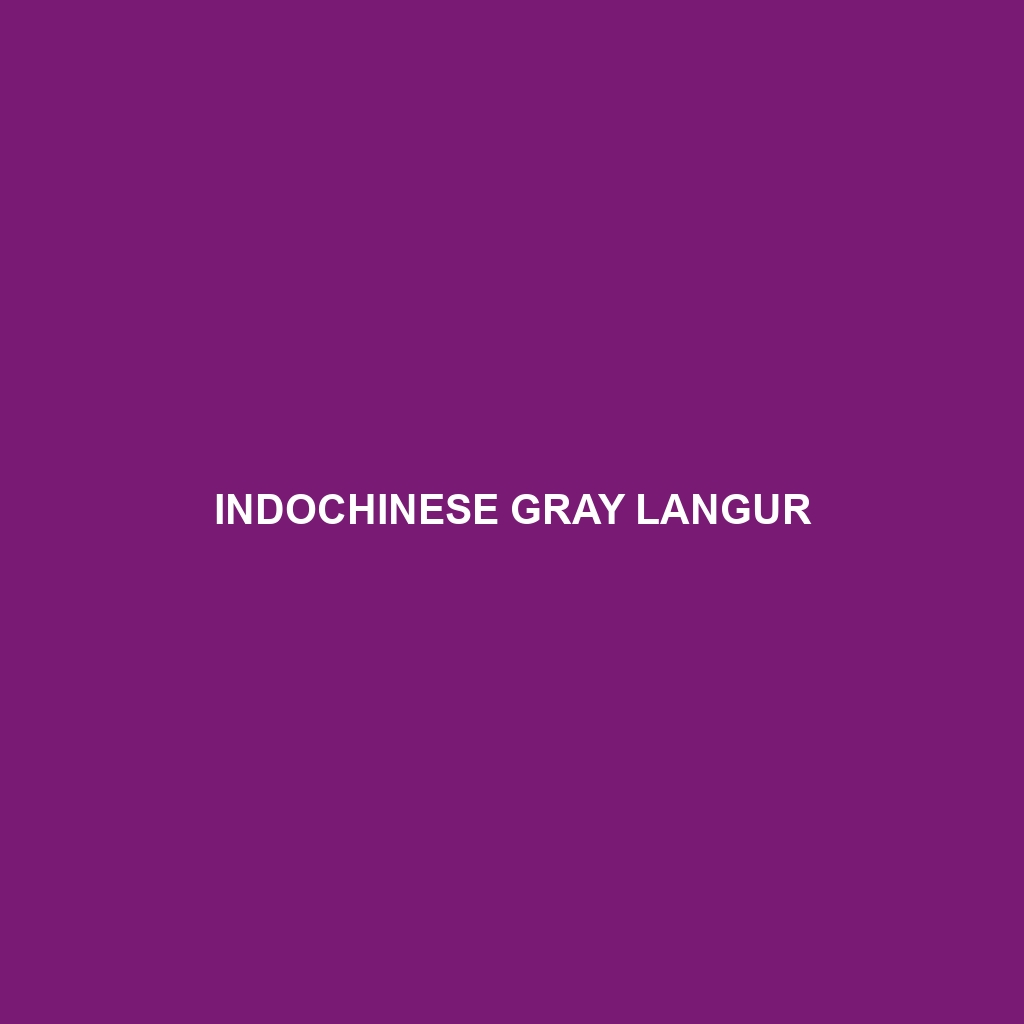Indochinese Gray Langur (Trachypithecus crepusculus)
The Indochinese Gray Langur, also known as the Indochinese Silvered Langur, is a primate species belonging to the family Cercopithecidae. These monkeys are primarily found in Southeast Asia, specifically in regions of Vietnam, Laos, and Cambodia. Known for their striking coat coloration and engaging social behaviors, Indochinese Gray Langurs play an important role in their ecosystems. Their presence is a sign of a healthy forest, as they contribute to seed dispersal and forest regeneration.
Physical Characteristics
Size: Adult Indochinese Gray Langurs typically weigh between 6-8 kilograms (13-18 pounds) and have a body length ranging from 50 to 70 centimeters (20-28 inches), with tails that add an additional 70-100 centimeters (28-40 inches).
Coloration: Their fur is primarily gray, with a silvery sheen that gives them an elegant appearance. The underparts are generally lighter, and their faces are framed with a lighter fur that contrasts with their darker skin.
Special Features: They have long, powerful tails and strong, slim limbs adapted for an arboreal lifestyle. Their prehensile tails aid in balance and navigating through the forest canopy.
Behaviors
Social Interactions: Indochinese Gray Langurs are highly social animals living in groups that can range from a few individuals to as many as 20. These groups are typically composed of one dominant male, multiple females, and their offspring. Social grooming is an important activity that strengthens bonds within the group.
Feeding Habits: They are primarily folivorous, feeding on a diet consisting largely of leaves, but they also consume fruits, flowers, and bark. Their complex stomachs are specially adapted to digest a high-fiber diet.
Ecological Roles: As folivores, they help in the process of seed dispersal, which is crucial for forest regeneration. Their feeding habits also play a role in maintaining the balance of plant species in their habitats.
Habitats
Indochinese Gray Langurs inhabit tropical and subtropical forests, including evergreen, semi-evergreen, and deciduous forests. They are also found in mountainous regions up to elevations of 1,500 meters (4,900 feet). They spend most of their time in the forest canopy, rarely descending to the ground.
Adaptations
Arboreal Adaptations: Their long limbs and tails are perfectly suited for an arboreal lifestyle. They are adept at leaping from branch to branch and can cover significant distances through the treetops.
Digestive System: Their stomachs have multiple chambers that allow them to digest tough, fibrous plant material efficiently. This adaptation enables them to thrive on a diet that many other animals find indigestible.
Conservation Status
The Indochinese Gray Langur is currently listed as Near Threatened on the IUCN Red List. Habitat loss due to logging and agricultural expansion, along with hunting and illegal wildlife trade, are significant threats to their populations. Conservation efforts include habitat protection, anti-poaching measures, and community education programs to raise awareness about the species.
Fun Facts
Mimicry and Communication: These langurs use a variety of vocalizations and facial expressions to communicate. Alarm calls can alert the group to the presence of predators.
Infant Coloration: Newborn langurs are often a different color than adults, typically orange or yellow, which changes to the characteristic gray as they mature.
Sunbathing: Indochinese Gray Langurs enjoy sunbathing and can often be seen basking in the early morning sunlight to warm up after the cool night.
The Indochinese Gray Langur is a fascinating species with unique adaptations that make it a vital part of Southeast Asia’s forest ecosystems. Conservation efforts are crucial to ensure that these remarkable primates continue to thrive in the wild.
